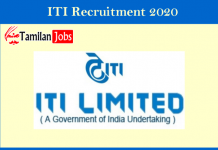ELSS Funds
Lock-in
EPF has a lock-in for 3 years. Thereafter you can either withdraw your money or leave it in the ELSS fund where it will continue to earn returns.
Returns
Tax
Axis Long Term Equity Fund
Axis Long Term Equity Fund, launched on December 29, 2009 by Axis Mutual Fund is the star of the ELSS category. Its runaway success has caused its AUM to become the largest in the category at roughly Rs 18,750 crore.. The fund invests in companies with strong potential of generating wealth over the 3–4 years period. This strategy has worked well for its investors. The scheme has consistently outperformed its benchmark and most ELSS mutual funds by a wide margin and held its own even in difficult years like 2018. Axis long term equity fund is a large-cap oriented fund with about 87% of its investments in giant and large cap space. It has three year returns of 14.1% and five year returns of 24.9% respectively.
Franklin India Taxshield
Generating 2Opt for ICICI Prudential Long Term Equity Fund, Reliance Tax Saver Fund, Birla Sunlife Tax Relief 96, Tata India Tax Saving and IDFC Tax Advantage if you have a high risk appetite. These funds have high exposure to mid cap and small cap stocks. As the PE multiple of BSE Midcap Index is hovering at around 27, their higher holdings in mid-cap and small-cap stocks make them vulnerable to market correction. Go for Axis Long Term Equity Fund, DSP BlackRock Tax Saver Fund, Franklin India Tax Shield Fund, Invesco India Tax Plan and Principal Tax Savings Fund if you have moderate or low risk appetite. 3.2% (CAGR) return since its Launched on April 10, 1999, this fund has been a long term star performer. An investment of Rs 10,000 made on April 10, 1999 would be valued at Rs 5,74,350 on 11th September, 2018 a gain of 57 times since its launch price. The fund has beaten its benchmark in the past 5 years, 7 years and 10 years. It primarily invests in stocks with attractive valuations and strong growth prospects. This has allowed the fund to deal well with market crashes and outpace most peer funds during bull phases. With 79% of its investments in large cap companies, it is well placed to contain the losses from possible market corrections. R Janakiraman and Lakshmikanth Reddy have been at its helm since May 2016.
DSP Tax Saver Fund
This is a large-cap oriented fund with around 80% of its investments in large cap companies. It follows a bottom-up investment style with a strong focus on good companies with attractive valuations and strong growth potential. DSP taxsaver fund has grown at around 14.2% return (CAGR) since its launch date of January 18, 2007. It has delivered about 14.7% (CAGR) and 21.2% (CAGR) over the last 3 years and 5 years respectively. The split between DSP and Blackrock is not likely to affect the performance of this fund, as. DSP Mutual Fund CEO Kalpen Parekh clarifies in his interview with Paisabazaar. The fund has been managed by Rohit Singhania since July 2015. Rohit Singhania is co-head of equities along with Vinit Sambre who manages the highly popular DSP Small Cap Fund.
Reliance Tax Saver Fund
Reliance Tax Saver Fund has beaten its benchmark (Nifty 100 TRI) over the past 5, 7 and 10 years. The fund has 97% of its portfolio in large cap stocks, having moved away dramatically from the mid and small caps that it focused on previously. Small and mid cap companies had seen their valuations grow rapidly in the ongoing bull market. The fund follows a mix of growth and value style of investing. Over the last 5 – 10 years, Reliance tax saver fund has been able to outperform the average return of ELSS funds by 2-3 percentage points and its benchmark by even larger volumes. It has delivered a return of 14.5% (CAGR) since its launch date of September 21, 2005 and has generated about 10.9% and 23% (CAGR) returns over the last 3 year and 5 year periods. Ashwani Kumar has been at its helm since 2005.
ICICI Prudential Long Term Equity Fund
This fund invests in companies with attractive valuations and good growth potential across various market capitalisations. It follows a value investment style, which allows it to outperform peer ELSS mutual funds during the initial bull market phases. It has generated over 21% (CAGR) returns since its launch date of August 19, 1999. The fund has outperformed its benchmark (Nifty 500) in the past 5 and 10 years, delivering 20.8% and 15.6% respectively. Almost 80% of its portfolio is invested in large cap companies, about 4% in debt and the rest in mid-cap and small-cap companies. George Heber Joseph has been its fund manager since April 2015.
Aditya Birla Sun life Tax Relief 96
This fund aims to generate long term wealth by investing 80–100% of its portfolio in equities and the rest in debt and money market instruments. This fund is the one of best performing Aditya Birla Sun Life Mutual Funds and follows a mix of the value and growth styles of investment. It has generated over 25.3% (CAGR) return since its launch on March 29, 1996. The fund is heavily tilted towards large cap with 87% of its portfolio invested in giant and large-cap companies and the rest in mid- and small-cap companies and debt. It has generated over 16.6% and 24.1% (CAGR) returns over the last 3 and 5 year periods. Ajay Garg has been its fund manager since October 2006.
Invesco India Tax Plan
This fund was launched on December 29, 2006 and has delivered over 15.2% (CAGR) returns since then. It aims to achieve long term capital appreciation by investing in equities across market capitalisation. Currently, large and giant-cap companies form 75% of its portfolio while the rest 25% is held in mid-cap and small-cap companies as well as debt (1.6%). The fund invests in mid-cap companies with strong potential of benefiting from increase in domestic consumption. It has delivered over 15.4% and 23.2% (CAGR) returns over the 3-year and 5-year periods respectively. It has outperformed its benchmark over the past 5 years by about 5 percent.
Tata India Tax Savings
This fund has delivered over 19.5% (CAGR) since its launch on March 31, 1996. It aims to generate long term wealth by investing in companies with good fundamentals. It uses a mix of growth and value strategy for stock selection. Currently, as much as 99% of its portfolio is invested in large and giant cap stocks while the rest are invested in small and midcap companies, following a big shift towards large cap. It has generated over 15.5% and 20.9% (CAGR) over the last 3-year and 5-year period respectively. However, its high portfolio P/E multiple of 30.2 carries a significant downward risk to this fund. This fund is ideally suited for investors favouring a large cap approach with moderate appetite. Rupesh Patel has managed it since April 2015.
IDFC Tax Advantage
This fund was launched on December 26, 2008 and has generated 19.9% (CAGR) return since then. The fund follows a large-cap approach with about 87% of its holdings in the giant and large-cap space, 7% in debt and the rest in mid-cap and small-cap companies. It follows a conservative investment approach by focusing on companies with low valuations and high growth prospects. It has delivered around 15.3% (CAGR) and 22.1% in both 3 year and 5 year period, thereby beating its benchmark (BSE 200 TRI) in both periods.
Principal Tax Savings
This fund aims to generate long term returns by investing more than 80% of its assets in equity and equity-related instruments and the rest in debt and money market instruments. Currently, about 81% of its portfolio is held in giant and large-cap companies while the rest are in mid-cap and small-cap companies. 3.25% is held in cash and cash equivalents. The fund has delivered over 17.5% and 22.4% (CAGR) returns over the last 3 year and 5 year periods respectively, beating its benchmark (Nifty 500 TRI) by 2-4%.
To sum it up, carefully analyse your own risk appetite before selecting the ELSS funds. Although past performance of ELSS funds cannot guarantee their future performance, they can at least give you an idea of how a particular ELSS fund has dealt with past bear and bull market phases. Make sure to compare the performance of your chosen ELSS fund with its benchmark index and its peer ELSS mutual funds over the last 3 and 5 year period before finally investing in that fund.






























